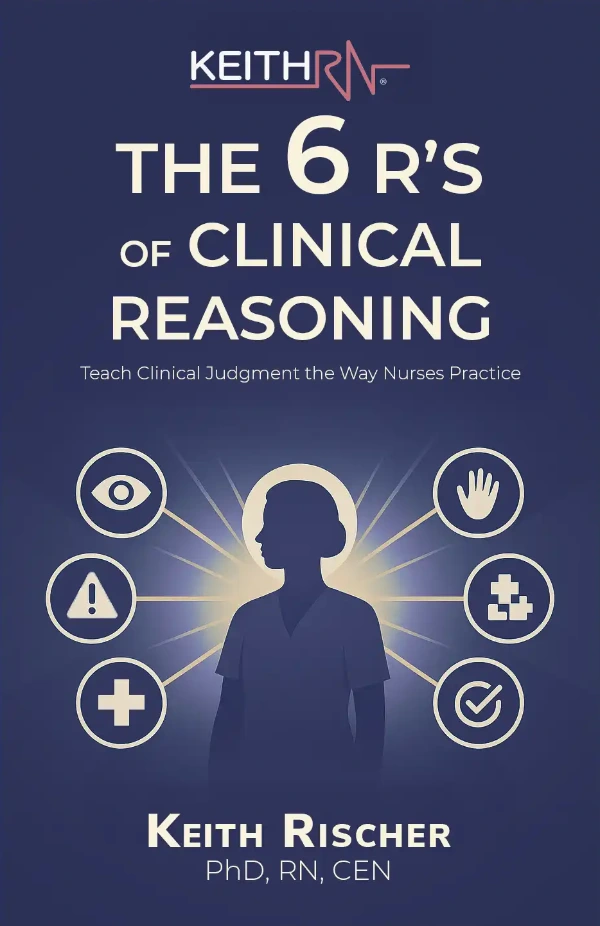
The findings of a recent journal article, “A Crisis in Competency: The Strategic and Ethical Imperative to Assessing New Graduate Nurses’ Clinical Reasoning” identified that nursing education is losing ground in the quest to graduate students who meet entry level competency requirements.
Despite passing the NCLEX®, in this study, the majority of graduate nurses were unable to clinically reason by managing a patient problem or recognizing the need to rescue with a patient status change.
The authors found that graduate nurses are NOT being prepared to function in the complex field of real-world clinical practice where increased patient acuity and decreased length of stay is the norm.
What Needs to Change
There were several recommendations that this article proposed to reverse this concerning trend that included:
- Curriculum that emphasizes critical thinking as well as clinical reasoning
- Provide guided learning opportunities so that students can transfer knowledge to the bedside and transition successfully to real-world practice.
- Develop teaching strategies that keep students focused on the patient’s experience and view practice through the lens of the patient’s reality.
One More Thing…
There is another recommendation from this study that needs to be considered by nurse educators. In fact, I will not paraphrase it, but quote it below:
“Expert clinical staff nurses are no replacement for faculty who are clinically current” (Kavanagh & Szweda, 2017, p.61).
Though the article did not address the barriers that influence the challenges for full time faculty to remain current in autonomous clinical practice, nursing education must recognize the value of maintaining some level of ongoing clinical practice to improve practice readiness of the students who graduate.
What Nursing School Can Learn from Medical School
Medical residents who are interns at the hospital where I work noted that almost all of their professors in medical school remain current in clinical practice or research while they teach. Most could not recall one professor who was not.
I have observed from my personal experience as well as those departments that I have visited around the country that the converse is true in nursing education.
The majority of full-time nurse educators who teach nursing are no longer current in autonomous clinical practice.
Consequences to Practice Readiness
The longer that a nurse educator is away from the bedside, the more likely that faculty will be disengaged and disconnected from the ever-changing dynamics of healthcare and clinical practice.
I have observed that when I have been on vacation and not been in practice for two or three weeks, I initially feel out of sorts and struggle a bit until I regain my fluency after the first shift back.
Though many full time faculty teach clinical, this context cannot be equated to being the same as autonomous clinical practice. Though this is good and has benefit to the educator, it is not the same as maintaining autonomous clinical practice at some level.
A clinical instructor is not ultimately responsible for any of the patient’s that students care for. It is the responsibility of the primary nurse.
What is Your Academic Culture?
What is the culture in your department regarding clinical currency and its value to clinical education for students?
I believe that the benefit to student learning is obvious and if possible, maintaining some level of clinically currency for full-time faculty should be an objective to strive for.
But I also know that this may be unrealistic. Therefore I would like to propose some practical steps to strengthen student learning and practice readiness by doing the best that can be done in the current culture of nursing education.
Practical Steps
- If you have the summer off, make it a priority to pick up hours in a practice setting relevant to the content you teach as a clinical instructor.
- Explore the requirements in clinical settings or home care agencies to practice as a nurse on a casual basis. Some agencies have a minimum of 1 to 2 shifts a month. Is this doable with your schedule? Only you can decide, but recognize the value of this experience to your role as an educator of nursing.
- Spend additional time shadowing nurses in practice in the clinical settings of your community.
- Make it a priority to subscribe to the professional journals of the content that you teach as well as practice clinical in. Utilize the library database to access not only relevant nursing education journals, but practice based journals. This will ensure that you are aware of current best practice and have your finger on the pulse of current clinical practice.
- Maintain membership in nursing specialties that you teach. This provides opportunities to attend conferences and other events that will highlight current and best practice.
Paradigm Shift
A paradigm shift needs to take place in nursing education that recognizes the value of maintaining clinical practice to strengthen practice readiness of students.
Instead of making the 8-16 hours a month that some faculty pickup above and beyond their credit load, these hours should be calculated and count directly to the credit load the nurse is contracted and paid for.
Though this may be a world that one can only “imagine” at this time, it needs to be considered and proposed by nursing department deans and directors to academic leadership.
In Closing
Clinical currency of nursing faculty is needed and is no replacement for experienced nurses that students will work with in the practice settings.
Nursing students are able to quickly recognize which faculty have relevance in the clinical setting and those who are not.
Nurse educators who remain current at some level in clinical practice will not only have greater comfort and salience in the clinical setting, but student learning will be strengthened as a result.
Because nursing is a practice-based profession, make it a priority to implement any of the four steps to strengthen your clinical practice as an educator.
Do this, and the present gap between academia and practice will shrink and the practice readiness of students can be improved!
What do you think?
How have you maintained currency in clinical practice as a nurse educator?
Share your thoughts below and let the conversation begin!
References
- Kavanagh, J. & Szweda, C. (2017). A crisis in competency: The strategic and ethical imperative to assessing new graduate nurses’ clinical reasoning. Nursing Education Perspectives, 38(2), 57-61.
Related Posts
Keith Rischer – PhD, RN, CEN
As a nurse with over 35 years of experience who remained in practice as an educator, I’ve witnessed the gap between how nursing is taught and how it is practiced, and I decided to do something about it! Read more…
The Ultimate Solution to Develop Clinical Judgment Skills
KeithRN’s Think Like a Nurse Membership
Access exclusive active learning resources for faculty and students, including KeithRN Case Studies, making it your go-to resource.




